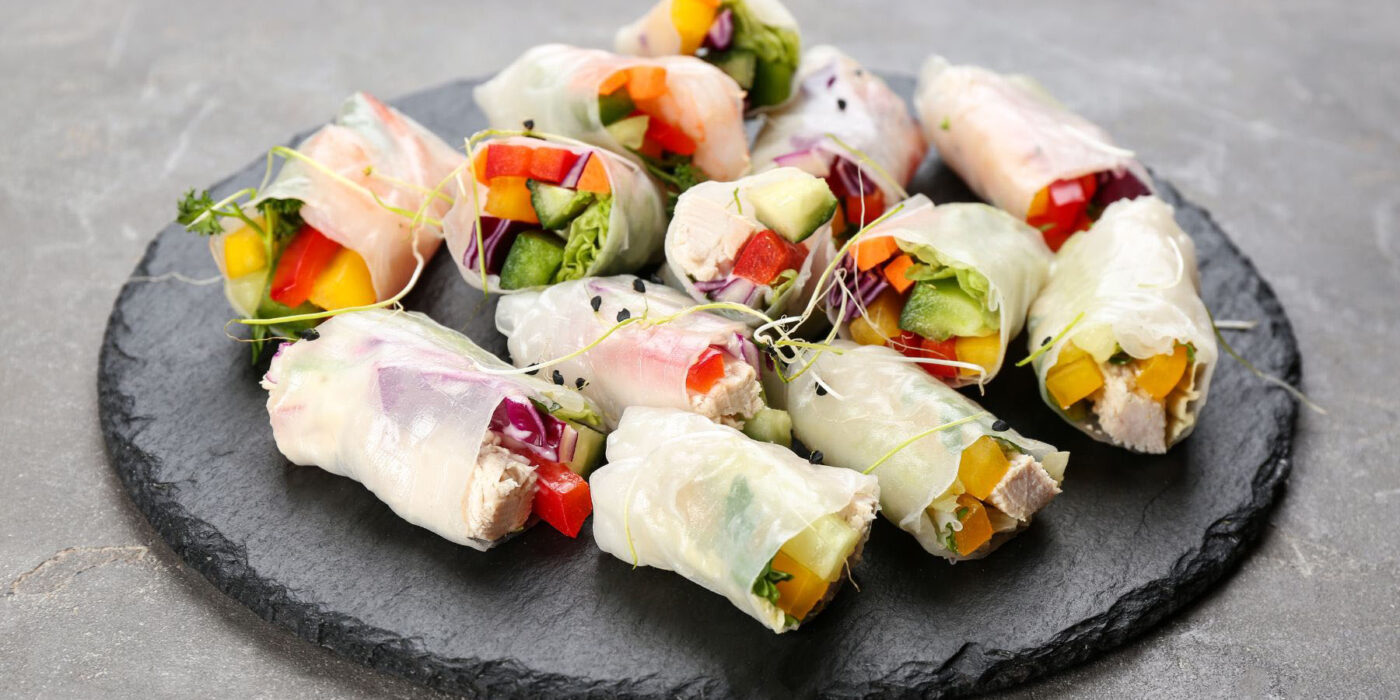Reset, Refresh, Reframe for 2024
I joke around with our neighbours’ kids that adulting is hard. I’m kidding and yet it’s true. Being an adult is a complex experience in part because we are emotional beings. As humans, we’re wired for safety and survival, we tend to view our circumstances as either negative or positive. Even on the sunniest of days, when we get the perfect parking spot and cruise quickly through checkout at the store, once someone cuts us off in traffic or we get some bad news about one of our kids the day becomes about the negative experience and that’s what we play over an over in our thoughts.
Our thinking mind loves to categorize and judge because of our need to feel safe and in charge. When something interferes with our plans or some unexpected situation arises, our thinking mind will examine all the ways in which this perceived obstacle might be threatening. It looks for the worst that could happen and we’re left to figure out the next steps for our safety.
Our thought process can be exhausting.
When we allow our thinking mind to lead in this way, we pile on stress, which can cause analysis paralysis because we’re over thinking. We invest our time in examining situations from every angle in the hope that at some point, a solution will magically appear. When an answer does bubble up, we second guess it, never feeling fully confident that it’s the right one, so we procrastinate a little longer, hoping that at some other time we’ll feel better about addressing our circumstances.
Yup. This is what it is to be human, when we allow our thinking mind to lead us by making decisions either mindlessly or based on other people’s expectations and values.
“Most of our stress and suffering come not from events, but from our thoughts. Reframe from negative thoughts, and stress subsides.”
–Martha Beck
Because our thoughts are so powerful, and researchers estimate we have between 60,000 and 80,000 of them a day (most of them negative for the reasons I describe above) they’re worth investigating. In the 1960’s American psychiatrist, Aaron Tempkin Beck helped patients who were struggling with depression to shift from a negative mindset to a positive mindset. The process was termed cognitive restructuring and over time became known as simply reframing, to portray the process of shifting the focus of our thoughts, to ultimately nourish a more positive mindset. Reframing can really help us experience everyday life differently and will influence how we feel about ourselves without changing any of the facts of whatever situation we’re dealing with.
“Our key to transforming anything lies in our ability to reframe it.”
-Marianne Williamson
Many people who consider giving up their family home experience anxiety over the unknown and feel their self-worth and sense of accomplishment is tied directly to owning their home. Who they will be without the identity of being an independent homeowner. The concern is real, but we can ask a better question than who will I be without being a homeowner? We can reframe the situation by asking who do I get to be without all the responsibilities that come with owning a home? The first question is big and ambiguous while the second question has immediate answers such as: I’ll have more time to connect with friends and family; I’ll have more resources to do the things I really want to do. In short, I’ll be free and it’s from that mindset that we can make sound decisions about the next right steps for ourselves. That’s the power of reframing.
“I am not failing — I am growing! Do you have the ability to reframe failure as growth in order to achieve your goals?”
-James C. Collins
I think we can all agree that as human beings we’re tough on ourselves when it comes to making mistakes. We learn early in life that the goal is to make our lives run smoothly instead of recognizing that life is a bumpy ride, and it goes more smoothly when we embrace the notion that mistakes are simply opportunities to learn. Let’s reframe the idea that life is happening to us (victim mentality) to life is happening for us (student of life mentality).
Motivational maven Mel Robbins teaches the five second rule: from the second we have an idea to do something, change something or take action on something, we have five seconds before our thinking mind steps in with all the reasons why not. Five seconds to get out of the chair and move our body, five seconds to book the tickets, make the reservation, call that friend before our thinking mind steps in to say you can do that later or not at all. Understanding how we’re wired helps us stay a little ahead of our powerful and negative thought bias, so that we can reframe the situation and decide to take action.
“Attitude is the ability to reframe the experience to empower you to future victories.”
-Orrin Woodward
As I’m getting older, I hear people say that if you have your health, you have everything and that’s one last point I’d like to reframe. While we do our best to maintain our health, things happen, and we can easily be taken down. Our attitude and our perspective on life as it is, is where we can really mine for gold. When life serves up lemons, we can tap into our attitude, to help us focus on what’s going well instead of what’s wrong; we can lean on our friends, family and community which are essential ingredients when it comes to making life-lesson lemonade. Interdependence is a key pillar of living a fulfilling life, especially as we age. Instead of imagining the worst-case scenario, we can reframe and ask what’s the best that could happen? When we choose to think this way with wisdom, clarity, self-compassion and acceptance, we empower ourselves to see the beauty and experience the bounty in our lives. We affirm that we are better together and that’s a great way to begin a new year.

This Wellings blog by Kathie Donovan was exclusively written for Wellings Communities and appeared first on MyWellings.com.
Chef Robert’s Festive Mulled Wine: A Holiday Treat from Wellings
In this heartwarming episode from the World of Wellings, join Robert Mills, our VP of Food and Beverage and Executive Chef, as he dives into the festive spirit with his favourite holiday drink – Mulled Wine.
The recipe includes:
- A whole bottle of sweet Merlot
- A splash of Brandy
- Classic spices like cinnamon sticks, star anise, and cloves
- Cranberries
- An orange slice
The aroma of cinnamon and orange zest creates a welcoming ambiance, making it a perfect holiday welcome. It’s not just a beverage; it’s an invitation to savor the warmth and joy of the holidays at Wellings.
Cheers!🍷🎄
Transform Leftover Turkey into Festive Hors d’Oeuvres
Join us on the World of Wellings for a delightful culinary journey hosted by Meaghan, one of our talented chefs from the Wellings of Stittsville, and Robert Mills, our VP of Hospitality and a skilled chef himself. In our latest video, they share their passion for creating memorable dining experiences and their love for engaging with the community through their culinary creations.
This episode is especially exciting as we transform leftover turkey from Christmas into exquisite hors d’oeuvres, perfect for sharing with your guests on New Year’s Eve. Our chefs demonstrate three creative and mouth-watering recipes:
- Roast Turkey & Mango Rice Paper Wraps: These wraps are a fusion of flavours, combining tender turkey with crunchy coleslaw enriched with the sweetness of mango and the freshness of lettuce.
- Choux Pastry Delights: A sophisticated treat featuring choux pastry filled with aged cheddar, succulent turkey, and crisp asparagus.
- Mini Potato Bites with Turkey: A comfort food classic, these mini bites perfectly blend steamed potato and savoury turkey, making them irresistible finger food.
Each recipe is designed to be easy to follow, ensuring you can recreate these culinary delights at home. Whether you’re a seasoned cook or a beginner, these hors d’oeuvres will add a touch of elegance to your New Year’s Eve celebrations. As a special bonus, we’ve included a recipe card for the roast turkey & mango rice paper wraps below. Join us in this culinary adventure and enjoy creating and sharing these delightful hors d’oeuvres with your friends and family this holiday season.
Joyful Moments: Embracing Daily Celebrations
Welcome to the Festive Edition of The Good Life with Nat and Kat.
In this special episode, join us as we dive into the heartwarming celebrations of December. It’s a time of diverse festivities, joy, and the magic of the season. Whether it’s embracing the return of light or partaking in Christmas traditions, there’s something for everyone to feel good about.
We’ll talk about what makes the festive season so special – from the delightful aromas of evergreen to the joy of decorations and delicious food. Discover the simple pleasures of the season with us, like simmering orange peels with cinnamon for that perfect holiday scent, and setting the scene for any celebration.
But it’s not just about the material aspects. We delve into the essence of celebrating life, creating memorable moments, and enjoying the season in our unique ways, be it through lights, music, or just the company of loved ones.
So, light up some twinkly lights, grab a cozy blanket, and let’s celebrate the joys of the festive season together on The Good Life with Nat and Kat. Happy holidays, everyone!
Celebrations for Every-Day Living
Long before the calendar flips over to December, my mind is focused on the festive season. I love everything about this month of celebrations. Whether it’s St. Nicholas Day, Bodhi Day, Hanukkah, Yule, Christmas, Boxing Day, or New Year’s Eve there are countless opportunities to gather and celebrate together.
It’s a time typically when we do our best to gather with family and friends or friends who feel like family. We bring out all the good stuff from special food and décor to heirloom dishware, and silverware, often kept stashed away until such special events. In our home, growing up, we celebrated Christmas and when we were children, there was the promise that if we were on our best behaviour, a jolly man in a red suit would reward us with gifts. That worked on me when I was a child, but now I know that the spirit of Santa Claus is in all of us. I think we’re all deserving of gifts; there’s a lot we can do for ourselves and share with others with minimal financial costs attached.
While the special occasions on our calendar are unique and I for one look forward to many of them, we can turn any day into something special by adding in a few of our favourite joy snacks, which help to lift our spirits and when shared with others become an instant party.
“The most beautiful things are not associated with money; they are memories and moments. If you don’t celebrate those, they can pass you by.” – Alek Wek, Model and Designer
Let’s set the mood. If you have favourite festive treasures, take them out so you can enjoy them for as long as possible. I wait until December 1st to decorate in full force but a few of my favourite things start to show up around the end of November. During the holidays, I often have a pot of water on the stove; I add a few cloves, some orange peel and cinnamon to create a festive ambience.
In this dark month when we long for the return of more sunlight, we can delight ourselves with twinkling lights, which instantly add a festive touch. You can put them around a window, across a mantle, decorate a plant with them or place them on a shelf. They have some kind of special magic that says festive mood to me. I’ll sometimes put them on during the day, especially if I’ve invited someone over for a visit. Candles are fantastic too; I love the warm glow they add to a cozy winter day.
“Every day is a good day. There is something to learn, care and celebrate.” – Amit Ray, Walking the Path of Compassion
Music makes such a difference in my life, especially around the holidays. It doesn’t have to be fancy, but I love to have either the classic crooners on or some festive instrumental music playing. I find music enhances a celebration and instantly lifts my spirits, even gets me dancing sometimes. Music is a big part of the season for me and now that I’m not doing much Christmas shopping, I make sure to book tickets for a few seasonal concerts and have them on the calendar to look forward to in December.
We’ve set the scene but what to wear? It used to be that dressing up for a special occasion was the norm, however today just about anything goes. If you’re the only guest at this party, you can dress however you like, go formal, casual or wear your favourite pajamas (festive themes are always a hit). If you’re inviting guests, the same thing applies. You can ask them to dress up or dress casually or invite them to come in their favourite pajamas. You might consider an ugly sweater for added fun. Remember the rule is that there are no rules when it comes to spreading joy.
Food is certainly a focus of the festive season, regardless of what you celebrate. It’s a great opportunity to share family recipes and traditions. If you’re inviting guests, why not ask them to bring a dish that is part of their festive tradition. It’s a great way to get a conversation going and it’s fun to learn about how others celebrate the season. If you’re having a solo event, either bring out your favourite snacks, order food you love or have breakfast for lunch or dinner. Some of us enjoy being in the kitchen and others appreciate food but don’t love preparing it. It’s all good; remember the rule is that there are no rules.
“The more you praise and celebrate your life, the more there is life to celebrate. “ – Oprah Winfrey
While in some ways, it feels like the wheels have come off in our world and there’s no disputing that times are tough. If we want to feel joyful, we must bring joy and when we share happiness with others, we’re tapping into the Santa Claus spirit I mentioned earlier. There are so many fun things we can do to spread joy in our families and our communities. Sharing stories about favourite family gatherings or gifts can spark beautiful memories and sharing those memories can help forge deeper connections with others.
Gift giving is a focus for some festive holidays. Consider wrapping a gift for yourself or donating a gift to a worthy cause. If you’re inviting guests, you can ask them to either bring something to donate or collect money to contribute to a group in need in your community. These seemingly small acts can make a big difference in someone’s life and that’s the spirit we’re focusing on when it comes to celebrating every day. Don’t wait for a special occasion, you are the special event and I’m so glad you’re here to share some of your joy in the world. That’s a beautiful gift. Wishing you a very happy holiday season.

This Wellings blog by Kathie Donovan was exclusively written for Wellings Communities and appeared first on MyWellings.com.
The Importance of Sleep and 3 Tips to Get Those Zzzs
Why is Sleep So Important for Seniors?
Physical Health: Sleep is crucial for physical restoration. Good sleep can help seniors improve concentration, repair cell damage, and strengthen the immune system. Lack of quality sleep, on the other hand, has been linked to a variety of health issues, including obesity, cardiovascular diseases, and diabetes.
Mental Health: Quality sleep is also essential for cognitive functions. It enhances memory retention, helps in maintaining emotional balance, and reduces the risk of disorders such as depression and anxiety.
Quality of Life: Good sleep contributes significantly to a senior’s quality of life. It helps maintain energy levels, enjoy social activities, and overall life satisfaction.
3 Tips for Better Sleep
Understanding the challenges faced in getting adequate sleep, here are three evidence-based tips to help improve sleep quality:
1. Establish a Consistent Sleep Routine
Consistency is Key: Going to bed and waking up simultaneously daily helps regulate your body’s internal clock.
Create a Bedtime Ritual: Engage in relaxing activities before bed, like reading or listening to soft music.
2. Optimize Your Sleep Environment
Comfort Matters: Ensure your bedroom is quiet, dark, and at a comfortable temperature.
Limit Screen Time: Reduce exposure to screens and bright lights in the evening, as they can disrupt your body’s ability to prepare for sleep.
3. Pay Attention to Diet and Exercise
Mind Your Diet: Avoid heavy meals, caffeine, and alcohol close to bedtime.
Stay Active: Regular physical activity can promote better sleep, but avoid vigorous exercises close to bedtime.
Embracing Healthy Sleep Practices
Remember, if sleep problems persist, it’s essential to consult with healthcare professionals to explore underlying causes and appropriate treatments.
In our best years, ‘let’s prioritize sleep for a healthier, happier life.
This blog is part of our ongoing series on senior health and wellness. Stay tuned for more insights and tips from the Wellings Community.
The World of Wellings: Crafting the Ultimate Salmon Salad with Chef Vincent & Chef Robert
Welcome to the vibrant culinary World of Wellings! Today, we’re excited to share a special treat from our kitchen – a video feature showcasing the exceptional talents of Chef Vincent and Chef Robert. They’re ready to reveal the secrets behind one of our most popular dishes – the Gourmet Salmon Salad.
Chef Vincent, alongside Chef Robert, takes us through a step-by-step journey of creating this exquisite salad. This dish is not your ordinary salad; it’s a symphony of diverse flavours, textures, and colors, culminating in a dining experience that delights both the eyes and the palate.
Our chefs emphasize the importance of using fresh, high-quality ingredients. The salmon, the star of the dish, is selected for its freshness and rich, buttery flavour. The greens are crisp and vibrant, forming a perfect backdrop for the pink hues of the salmon. The dressing, a blend of zesty and savory elements, ties the dish together beautifully.
The best part? You can recreate this healthy and delicious masterpiece in your own kitchen. We encourage you to try this recipe at home and share your experience with us. It’s more than just preparing a meal; it’s about embracing the joy of cooking and the pleasure of eating well.
We hope you enjoy this culinary journey with Chef Vincent and Chef Robert. Stay tuned for more delightful cooking adventures from The World of Wellings. Bon appétit!
The Gift of Forgiving: Finding Freedom in Letting Go
In today’s episode of, The Good Life with Nat and Kat, we explore the profound nature of forgiveness. Alexander Pope’s words ring true: “To err is human; to forgive, divine.”
Forgiveness is often thought of as something we extend to others, but it’s equally important to forgive ourselves. We tend to accumulate regrets and self-reproach as easily as dust gathers in unnoticed corners. Why do we give such importance to these minor missteps? It’s time to release that severity and embrace the freeing act of letting go.
Many of us carry an incessant inner critic that replays our perceived faults, continually thinking about how we could’ve done better. This is particularly true for those driven individuals, always aiming to go above and beyond. Yet, sometimes, just getting out of bed in the morning is an achievement in itself.
Life, by its nature, is messy and full of so-called mistakes, which are actually lessons in disguise. When we forgive ourselves for these perceived errors, we open ourselves up to growth and learning. It’s a simple, yet profound shift: learn the lesson, apply it, and improve the next time.
This path to self-forgiveness also involves confronting the emotional baggage we carry, whether from our own actions or those of others. We’re taught not to appear weak, especially high achievers who want everything to be perfect. But life isn’t perfect; it’s unpredictable and messy.
In sports, as in life, you have to start somewhere. Falling down and getting back up is part of the process. Clinging to past mistakes or grievances is a waste of life’s beautiful moments. As Brene Brown, the well-known researcher, teaches, it’s important to be courageous and vulnerable in this process.
Beginning the journey of forgiveness starts with looking inward and asking where we feel constrained by bitterness, resentment, or anger. Holding onto these feelings is like taking poison and expecting someone else to suffer. When you start to realize what’s holding you back, that’s when you can begin the process of forgiveness, a process that, like everything worthwhile, is ongoing.
Our future is much brighter when we allow ourselves the kindness of forgiveness. By not dwelling on past hurts, we avoid letting them overshadow our present. Forgiveness is about stepping out of the shadows and surrounding ourselves with people who support our growth and well-being.
Forgiveness does not mean denying what happened but rather changing our perspective on the situation, allowing us to let go for the sake of our personal growth. It’s an essential step in our pursuit of the best life possible.
So, let’s embrace the transformative power of forgiveness, for it is indeed a gift we give ourselves.
Thank you for joining us today, and may you find the strength to take that bold step towards a life free from the weights of the past.
Forgiveness is a Gift we Give Ourselves
“To err is human; to forgive, divine.” – poet Alexander Pope
Hands up if you have nothing to forgive yourself or anyone else for. Welcome to the club if you put your hand up. I find there’s always some dust bunny hiding in the back of my mind, a feeling I’ve gotten so used to living with that I don’t see where I need to forgive myself or anyone else. We’re so conditioned, especially in North America, to get over or move past hurt that we bury some of our feelings instead of dealing with them. Research tells us that over time, this type of emotional stress can be linked to mental illness, digestive and immune issues as well as heart disease.
I love what poet Alexander Pope says (above) about erring. To make mistakes is what it is to be a human being; to forgive ourselves and others for making mistakes, is a whole other story.
I don’t know about you, but I’ve been in the mistake making business all my life. I’ve always been independent-minded and very curious; it’s a mix that has helped me achieve some goals and it’s put me in plenty of precarious situations as well. It’s only in the last couple of decades that I’ve become curious about what lessons I was meant to learn from those situations. Before then, I just thought everything was my fault or someone else’s fault and I felt either disappointed in myself or let down by somebody else.
“To forgive is to set a prisoner free and discover that the prisoner was you.” —Lewis B. Smedes, ethicist and theologian
This game of blame, as researcher Dr. Brene Brown shares, is nothing more than a discharge of pain and discomfort. Oops that was me, repeatedly. I felt hurt by something someone did or I felt let down by myself and quickly assigned blame. It seemed like the right thing to do because when I blamed someone else, I felt better and when I blamed myself, I felt that familiar feeling of shame, which I thought was doing something about it. Wrong. Blaming myself was a missed opportunity to explore how I could hold myself accountable for the outcome and that would have felt vulnerable, which I was not familiar with. Vulnerability is another one of those feelings we’re not encouraged to investigate, at the risk of appearing weak.
What I’ve learned though is that being vulnerable is, contrary to popular belief, a strength. When I do presentations and share my story, some people are surprised to hear that I struggled, I mean really struggled as a young person. I had a bit of a stoic nature because nobody around me growing up talked about what was really going on in our lives. My parents taught us that there were home secrets and that was that. So, I invested quite a few years blaming them for the results I saw in my life. It seemed logical until I learned that everything in my life came back to me, so it was my responsibility to forgive them and myself for holding on to so many misguided ideas.
“Forgiveness is not an occasional act; it is a constant attitude.” —Rev. Martin Luther King, Jr.
Forgiveness for me is not a one and done, it’s a process. First, we must recognize where we’re holding on to anger, bitterness, or resentment. Then we must ask ourselves why we’re holding on to it. What benefit is there for us in holding on to these feelings? Then we acknowledge that forgiveness is not for anyone else but ourselves. That’s where we start the process of forgiveness and choose to no longer allow whatever bitterness, anger, or resentment we’ve been holding on to, to take up space in our life. It doesn’t mean we forget what happened, it means that we choose to see the situation through a different lens. We are choosing to put ourselves and our own peace of mind ahead of everything else. You’ve heard me say that we all need to be reminded that we are important, and we matter, right? Well, here’s another way to demonstrate that to ourselves.
“Forgiveness is the greatest gift you can give yourself.” – poet Maya Angelou.
One of my friends has had a years-long challenge with one of her adult children. It’s a complicated situation and my friend has tried every way she knows to reconcile the relationship. Nothing seemed to stick; even after brief moments of connection things would inevitably revert to a strained rapport. Recently my friend heard someone talk about making amends to their family for their behaviour and my friend decided to write a letter to her child, outlining the ways in which she saw herself as responsible for any pain or resentment her child might be feeling toward her. She made it clear that she held herself accountable for the ways in which her child may have felt neglected or let down by her. She read the letter to me; it was powerful. She owned her part in the demise of their relationship and that’s all she could do. She began the process of forgiving herself for whatever mistakes she may have made, perceived or real. She delivered the letter and released her feelings of resentment and frustration with it. I know she felt better about the situation and my hope is that in sharing her story, perhaps you might recognize that there’s some dust bunny somewhere in your mind that has been living rent free for too long and it’s time to go.
“The weak can never forgive. Forgiveness is the attribute of the strong.” – Mahatma Gandhi, Indian leader, and activist.
It takes great courage and self-compassion to begin the process of forgiving ourselves and others. The great reward is that in clearing out the clutter of misunderstandings, missed opportunities and resentments, we create space for more goodness and more joy to move in.

This Wellings blog by Kathie Donovan was exclusively written for Welllings Communities and appeared first on MyWellings.com.










